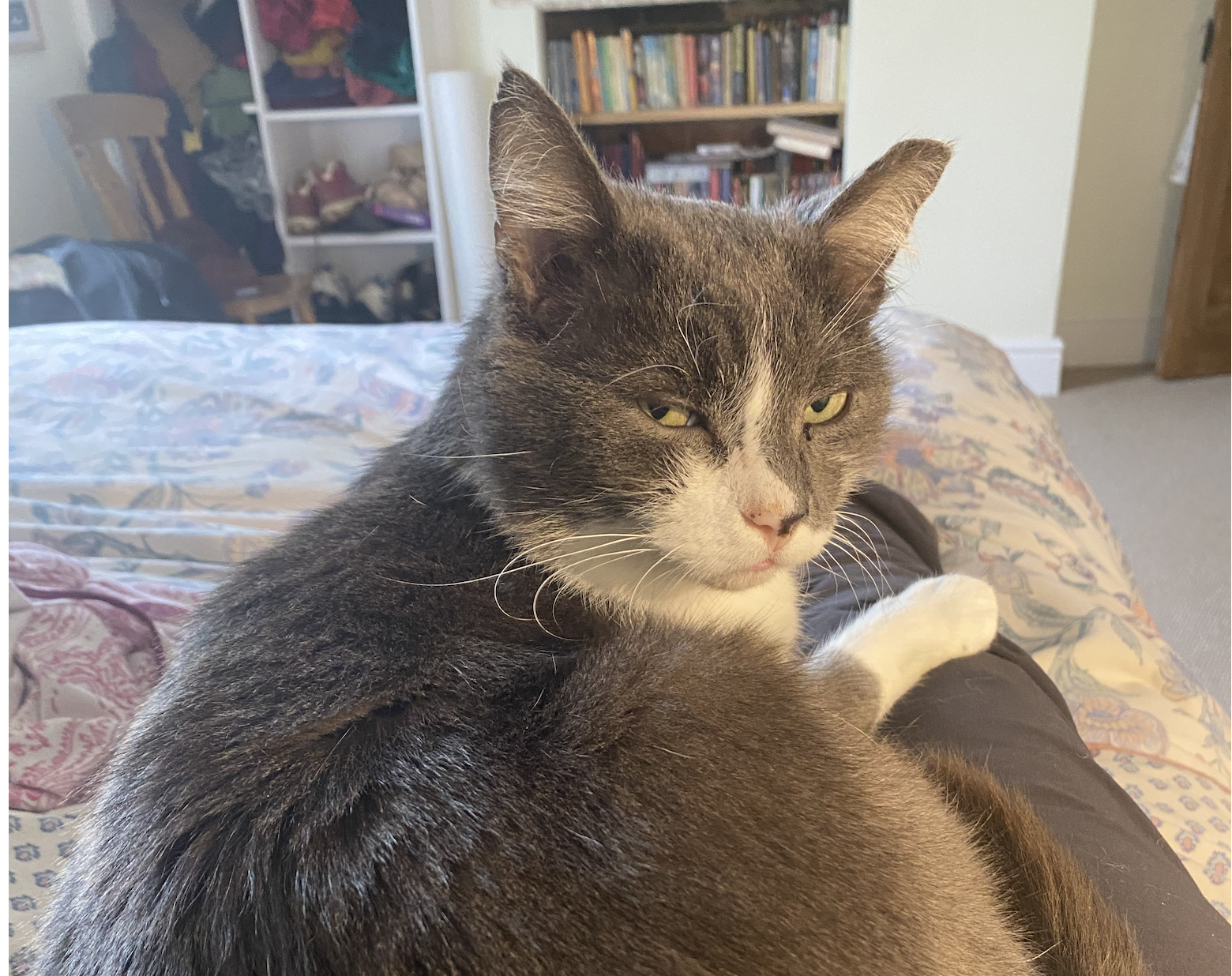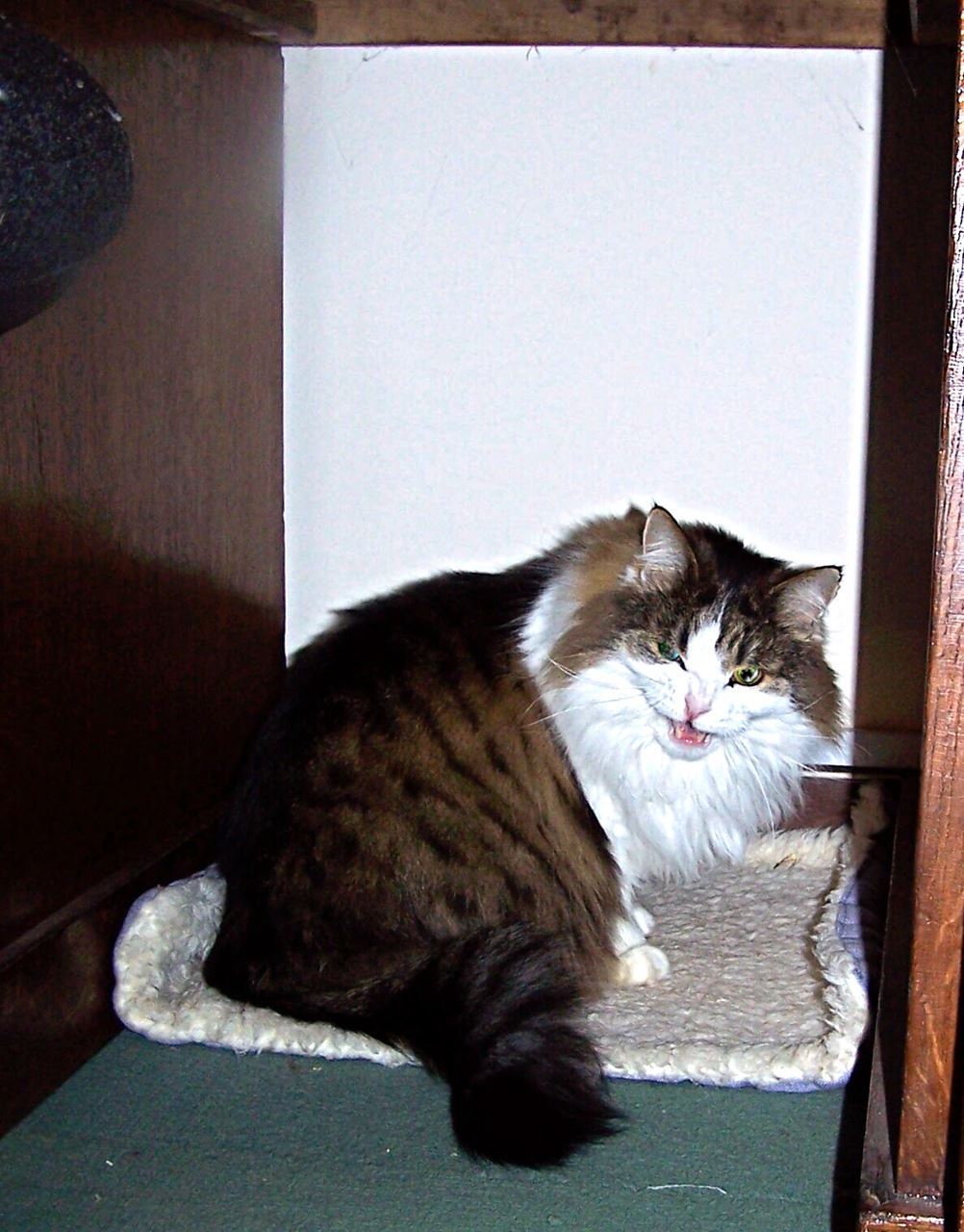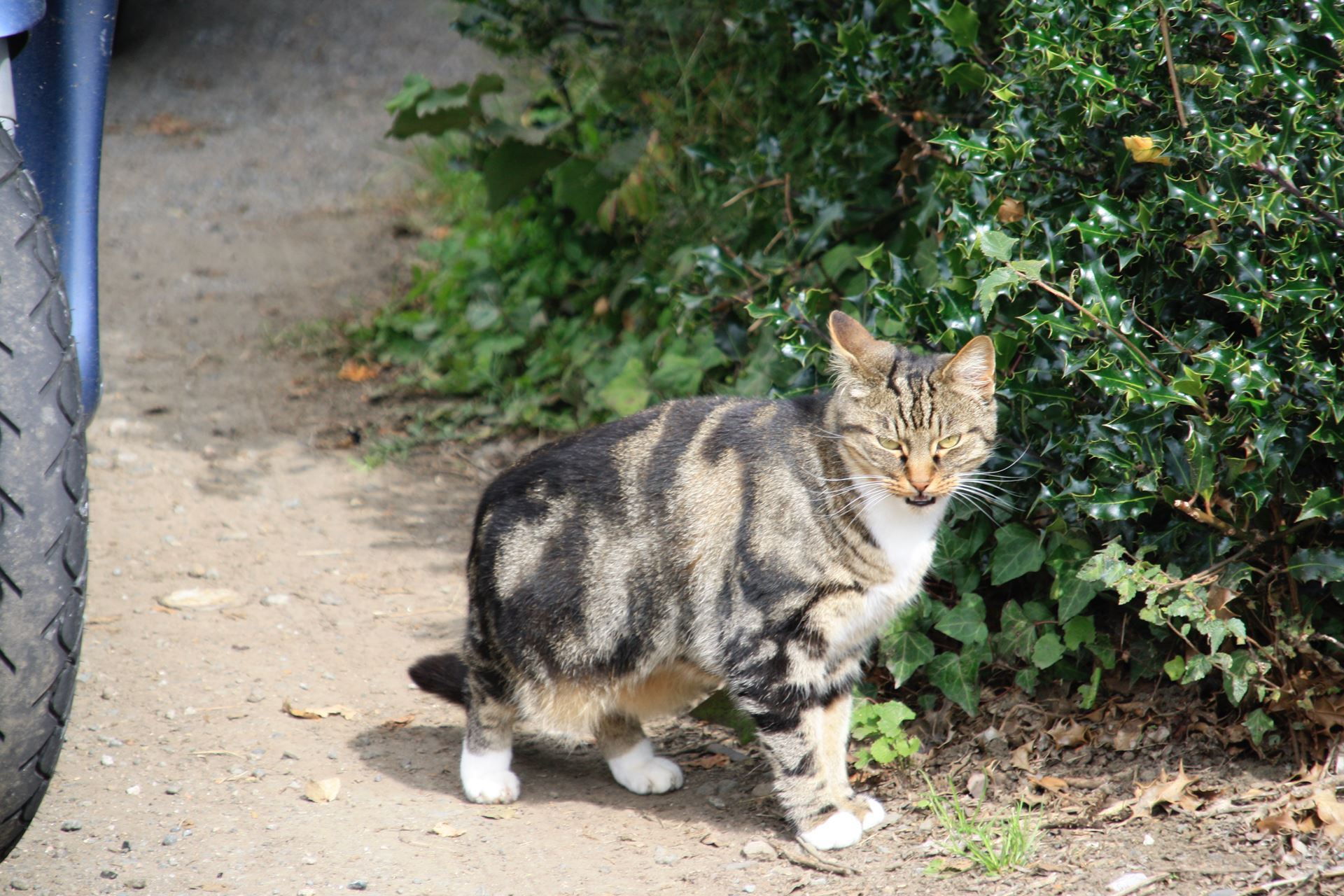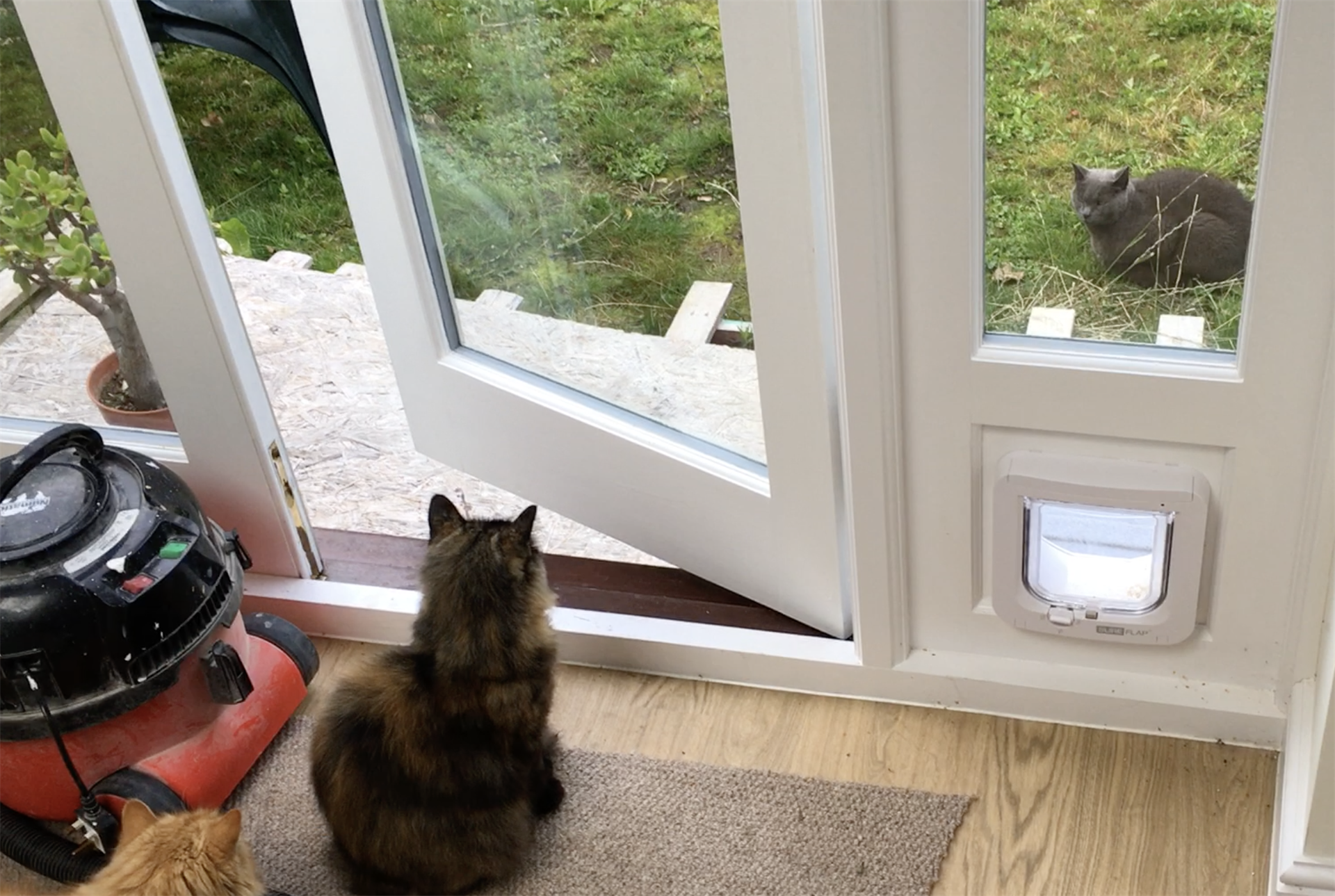By: ICAN Organisation Member (COAPE) Celia Haddon, MA, MSc, BSc
Cattery biting cats
Why does your cat nip you? My cat, Mr Spangles, nipped me this morning, as he often does. I don’t conclude from the nip that he is “vicious.” I merely conclude that he has given me a sharp message. He can’t use words and I was ignoring his body language until he finally gave me a sharp tactile message. So, what could he do to get through to me? A nip worked well. I withdrew the hand that had been absent-mindedly petting him for too long. Message received and understood by me.
Most cat bites are just mild nips that do not break the skin, but even so for many owners it is not always clear why their much-loved feline turned on them. But if we look at the interaction from the cats point of view, which I have tried to do in my book, Being Your Cat,* we need to realise that a nip from a cat is a message, a message which is usually “Stop doing that.”
When a previously relaxed cuddle cat suddenly starts biting it is often because something is wrong. Cats are skilled in concealing pain, and they do not usually cry or whimper. Hiding all signs of pain occurs because cats are prey animals for bigger carnivores like wolves, leopards and dogs. Keeping quiet about pain reduces the chance of a predator focussing on the cat as their next meal. The cat owner therefore may be completely unaware that their cat is ill or in pain. Sudden out-of-character aggression may be due to an abscess hidden by fur, tooth ache or a strained limb.
Elderly cats, in particular, often suffer from undiagnosed arthritis. The cuddling, stroking and picking up, which they once enjoyed, is now painful and they try to avoid human touch. Arthritic cats rarely limp but they may start finding it difficult to jump up on or down from the bed.
often suffer from undiagnosed arthritis. The cuddling, stroking and picking up, which they once enjoyed, is now painful and they try to avoid human touch. Arthritic cats rarely limp but they may start finding it difficult to jump up on or down from the bed.
Caption: ars swivelled back on Mr Spangles (Photo Credit: Celia Haddon)
They may also start bunny hopping up and down the stairs. Anxious to avoid any pain, they may seem less affectionate in general and they nip to stop their owner handling them. At this point a veterinary examination is a must.
If your cat is healthy, as my Mr Spangles is, it is worth investigating what happened before and during the nip. For this you need to ask yourself (since you can’t ask the cat) a few questions.

What was I doing before the nip? Were my strokes were faster or perhaps even rougher than normal? Did I smell of something which might upset the cat? Might I smell of a dog or neighbouring cat that I encountered earlier in the street. Cats that are true loners, and hate all other cats, can be upset by the smell on your hands. Was I picking up a cat that hates being picked up?
Caption: Cat cornered (Photo Credit: Celia Haddon)
And what was happening in the cat’s environment? Had there been something going on which increased feline stress. Possibilities are barking dogs nearby, the noise of a falling metal bowl, humans shouting, or even one of the other cats in your care wailing or even growling. Stressful events can make humans, as well as cats, jumpy and grumpy.
And where was the cat? Could this be an accidental nip? Did the cat become aggressive for a reason which had nothing to do with you, yet you happened to be nearby
 Caption: Feral cat (Photo Credit: Celia Haddon)
Caption: Feral cat (Photo Credit: Celia Haddon)
This is redirected aggression. The most obvious example of this is when humans try to intervene in a cat fight and become severely bitten. Less obvious is the bite which occurs when a cat is looking out of the window growling at a feline enemy outside. If approached at this very moment, frustrated that it cannot get at the enemy cat, your cat may turn and bite you instead.
Finally, ask yourself how serious the bite was? If the cat merely nipped you, not breaking the skin, then this is merely a message asking you to stop doing whatever it was that upset it. Indeed, the most common context for a nip or a scratch is during petting. There are many cats who will solicit a stroke but will nip if stroking goes on too long. For them two or three strokes are pleasurable, but they do not want more, and a nip will usually ensure the human hand is withdrawn. This is the so-called petting-and-biting syndrome. Keeping an eye out for the warning body language of swishing tail and ears swivelling back will help you stop petting before getting bitten.
A nip may also occur if a cat is being petting or touched in areas they do not like. Like humans, cats have private areas where they do not welcome an intrusive human hand. Most cats enjoy being stroked around the head and cheek areas but some cats dislike being touched around the end of their back near the tail. Many cats have a no-go area on the belly. If they roll over on their backs in front of you, they are doing the social roll which conveys a relaxed happiness. It is, however, not necessarily an invitation for a belly rub, so do not be tempted.
Nips that do not break the skin need not be a worry for the cat-human relationship but serious cat bites should taken seriously. A frightened cat may bite, particularly if it feels cornered and cannot run away. Cornered cats will fight and bite when they feel there is no other way to repel a human. There are also a few cats that will bite because they have got into hunting mode. This can be a deep bite. A bite like this occasionally happens when a cat has got really overexcited playing with their human. Their enjoyment of the game mounts to a level where they may decide that the hand that throws the toy is their real prey. If a cat is getting too excited with a cat toy, stop the game.

Caption: Cats staring at outside cat enemy. (Photo Credit: Celia Haddon)
Deep cat bites merely leave small puncture marks on the skin but can be dangerous. Wash the wound in salt and water immediately. Prophylactic antibiotics may also be a good idea. There are bacteria on the feline teeth which can cause infection and because cat bites are not open wounds, these bacteria stay in the body. Anybody handling feral or stray cats, or breaking up a cat fight, should wear protective gear such as gardening gloves and thick clothing.
If your cat has bitten you severely, you should call in a behaviourist, one that is qualified to deal with cats as well as dogs and (this is crucial) one that works with a vet’s referral. They can help you discover what is going on with the cat and what you can do to keep yourself safe from future bites.
What do you do about a cat that merely nips? Respect your cat’s private body areas and keep your hands off. Do not pet your cat too long. Learn the body language. When Mr Spangles swivels his ears back, swishes its tail or lifts a paw to strike, I withdraw my hand swiftly, thus avoiding being nipped!
